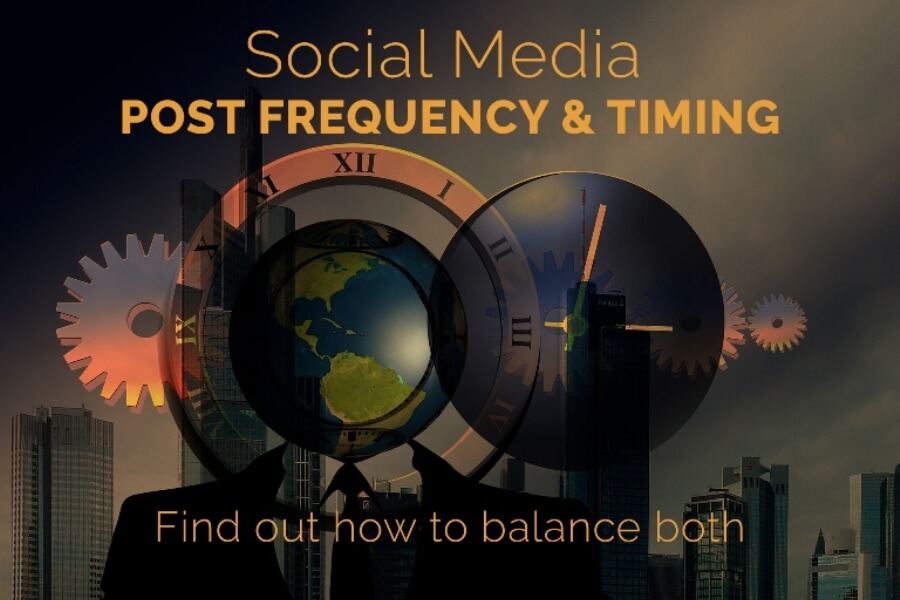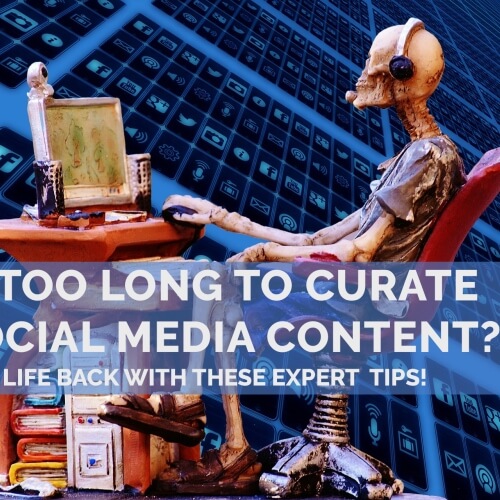Okay, you now have a social media strategy, know who your audience is and where they are, got your tools, set up your channels, and crafted your awesome content. Way to go! Now to find the perfect time to post your content to maximize it's impact with your audience.

Timing
"What is the perfect time to schedule my posts?" The perfect time is...a unicorn. It's a myth - doesn't exist - no rainbows, no shiny white coat - nada. What you need to ask is "What is the best time for my audience to see my post?".
That is a different question entirely, but is still very tricky to answer. If you know your target audience and you know where they are engaging on Social Media, you can narrow it down to a good guess. After that it becomes a matter of tracking your results and adjusting your schedule.
I have compiled a list of Best & Worst Times from several different experts, but it is just a guideline. Knowing when your audience is active is always your best option.
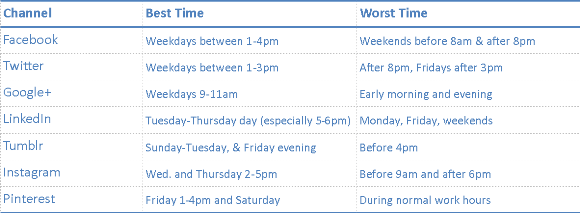
Frequency
The simple answer for frequency: Post as often as you have engaging, entertaining, or useful content to share. Keep track of engagement and followers to make sure that you are not over-posting and discouraging your audience. The chart below is recommended frequency - again, compiled from several sources. If you post more or less and disagree, that's ok. If you are in demand with your audience, post as much as they want you to! Just be sure to listen to them.
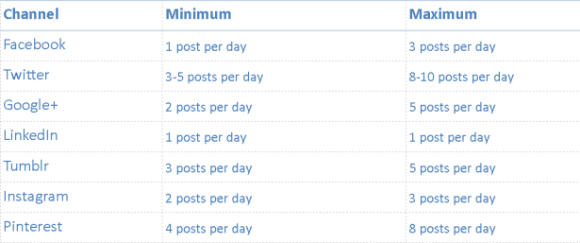
Scheduling
Now that we've gone over time frames and frequency for your posts, I want to stress how important it is to organize and maintain an Editorial Calendar and a Post Calendar. These two tools will be crucial to achieving your social media goals. I will briefly explain each and give you links to templates which you can download to help get you started.
- Editorial Calendar - Allows you to visualize the content you will be creating and keeps you on track by setting goals and deadlines.
- Post Calendar - Allows you an overview of when, where and how often your content will get posted. Also great for tracking and A/B testing your posts (more on that next week!).
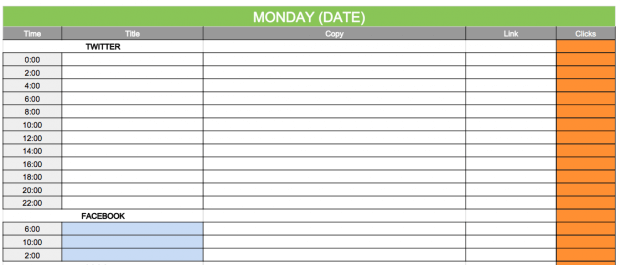
A quick Google search will net many free calendars of both types (many require email sign-ups). Here is a link to HootSuite's free library of SMM templates to get you started:
Example Schedule
So, you've determined your audience is mainly on Facebook and Twitter and you want to start posting content to reach them. You should be prepared to post this much content:
- Between 21 and 70 post/week = 46 average per week = 6-7 per day
- Of those 6-7 daily posts, 4 should be Curated, 2 should be Created, and 1 Comical (amusing or inspirational works too) on average.
- Between 3 and 21 post/week = 14 average per week = 2 per day
- Of those 14 weekly posts, mix in 7 Curated, 4 Created, and 3 Comical throughout the week.
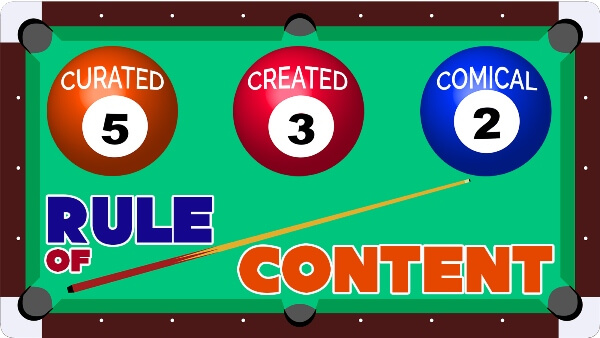
Of course, you should come up with a post plan which fits you. I personally have days with all created content (Monday - to launch my new blog post and Sunday to review my blogs prior to Monday's new release) and days with all Curated content (Wednesday and Saturday), with a mix the rest of the week.
I schedule my Twitter posts to rotate the same content with different messages at different times throughout the week. For example:
- Blog post #1, message #1 - Monday 8am
- Blog post #1, message #2 - Tuesday 12pm
- Blog post #1, message #3 - Wednesday 4pm
- Blog post #1, message #4 - Thursday 7pm
- Blog post #1, message #5 - Friday 11pm
- Same or similar for other blog posts
- My Curated content only gets posted a maximum of twice per week each unless it's really being engaged or it's a trending topic
This gives the same content a chance to get viewed at different times throughout the week. It also makes it really easy to track and analyze which messages and content are your best. Scheduling like this also helps stretch out your created content until you have enough to fill out your schedule.
Using the numbers above and a good schedule, we can break it down to where you would be able to fill the week with only having 2 Created content pieces and 10-12 Curated pieces.
Remember to stay consistent with your schedule. Your audience will come to expect your original content at a certain time on a certain day and you don't want to disappoint them!
Next Step
Now you are ready to put everything together, fill out your calendars, and engage your audience! Next absolute necessity you need to learn is How to Track and Analyze your posts. I'll show you how and give you some really useful tools next Monday in Part 5.
Images courtesy of Pixabay
